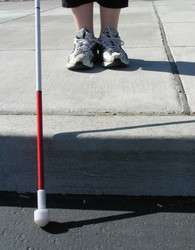Gaming technology makes its way into headsets for the visually impaired

EU researchers have developed a 3D headset that could help visually impaired people move around more safely and easily.
The DIGIGLASSES project, which kicked off in 2012, set out to develop a marketable digital tool for the visually impaired using stereoscopic vision, corrected and customised for the specific symptoms of the user's eye disease. The project's latest YouTube video announces the opening of product lines for participating SMEs. The project hopes it can be on market at the end of 2015.
With around 5 million people in Europe (285 million globally) living with a degree of visual impairment that takes them beyond the help of normal glasses, the market for DIGIGLASSES' innovative headset is clear.
In parallel with the marketing opportunities, the project's central objective is to help those affected access work, education and social activities more easily, so helping the visually impaired to have a similar standard of living as the rest of society. To do so the project is harnessing technology similar to that used by the gaming industry.
The headset has now been tested with the help of specialised trainers who work with visually impaired people to help them get the most out of new devices and tools, and with volunteers who are directly affected. Successful trials mean the SMEs participating in the project are now keen to develop the prototype to a marketable device and release it by the end of next year.
The headset comprises a pair of digital glasses, custom electronics and software, cameras and a processor similar to that found in smart phones. The user sees stereoscopic images which have been enhanced by the software.
The nature of that enhancement depends on the condition the user has. For example, contrast can be increased, edges of stairs or pavement curbs clearly accentuated, the borders of zebra crossings overlaid with red lines, and so on.
The optical element has a micro display which acts like a small television with high brightness and resolution. Magnifying optics using lenses and prisms turn the image from a small display into what appears to be a big screen.
Previously, similar head-mounted displays have been used by the gaming and video industry – the innovative element of the DIGIGLASSES project is that it is applying the technology to potentially enhance lives.
More information: www.digiglasses.eu/home
Provided by CORDIS





















